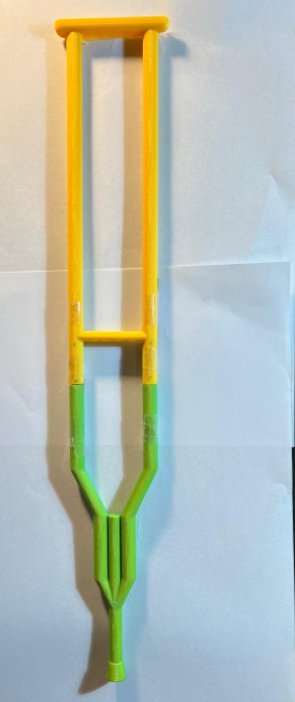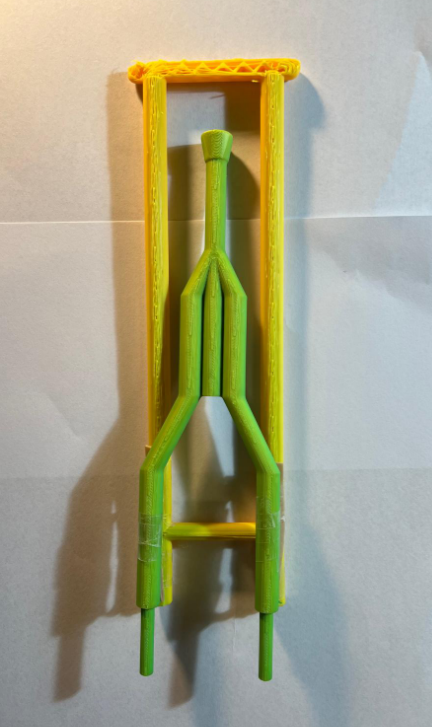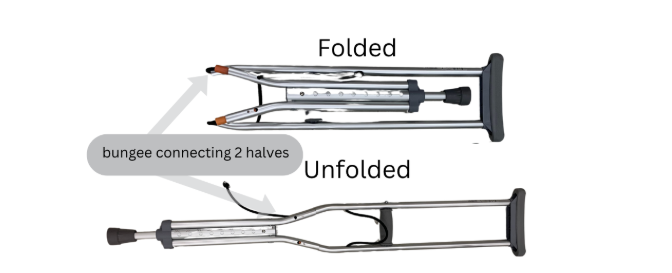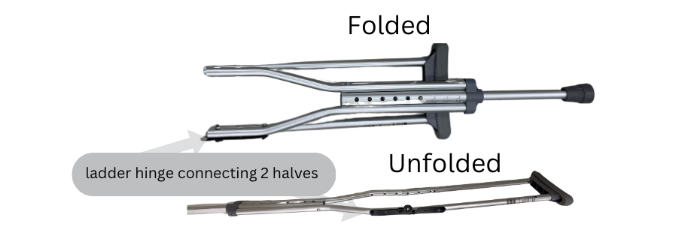Portable Crutch
Overview
This project focused on designing and prototyping a foldable crutch for improved portability and ease of use. Traditional crutches are often bulky and inconvenient to carry or store when not in use. The goal of this project was to create a lightweight, collapsible version that maintains strength and support while offering compact storage. Using CAD tools and physical prototyping, the crutch was designed with a folding joint mechanism, telescoping supports, and ergonomic features for comfort and stability.
Key Objectives
- Enhance Portability: Design a crutch that folds down easily to reduce storage size and improve transport convenience.
- Ensure Strength and Stability: Maintain the load-bearing capacity and safety of standard crutches.
- User-Focused Design: Include ergonomic considerations like comfortable grips, proper height adjustment, and intuitive folding mechanisms.
System Design & Implementation
- CAD Modeling:Designed the full crutch in Fusion 360, focusing on modular components that could be folded or collapsed without compromising structural integrity.
- Folding Mechanism: Integrated a locking hinge at the midpoint of the crutch frame that allows the upper and lower segments to fold inward.
- Assembly and Safety:Chose lightweight, durable materials suitable for 3D printing or machining, balancing strength and portability.
- Prototype Fabrication: Built a physical prototype using available lab tools and tested the foldability, weight, and user comfort.
Testing & Evaluation
The crutch underwent basic mechanical testing to assess joint stability, load capacity, and ease of folding. User feedback highlighted the importance of smooth transitions between folded and extended states, as well as grip comfort and locking reliability.
Outcomes and Next Steps
The final prototype demonstrated a successful proof of concept for a foldable crutch. It folded down significantly smaller than a traditional crutch, while still supporting user weight. Future directions include refining the hinge mechanism, exploring stronger materials for long-term durability, and adding shock absorption to the lower leg. This project strengthened skills in mechanical design, rapid prototyping, and user-centered assistive device development.
Project information
- Category Assistive Technology / Mechanical Design
- Type Junior Year Project
- Project date Aug, 2023 - Dec, 2023
- Links Human-Centered Engineering




